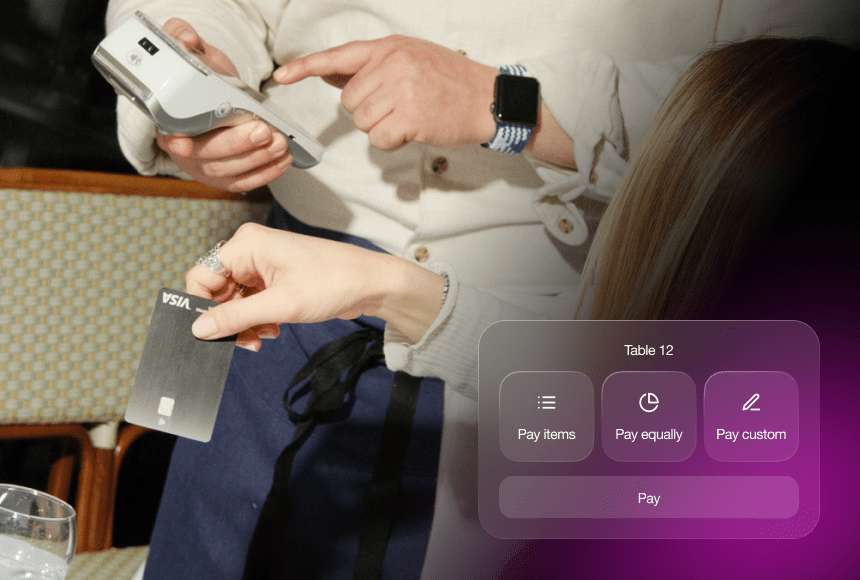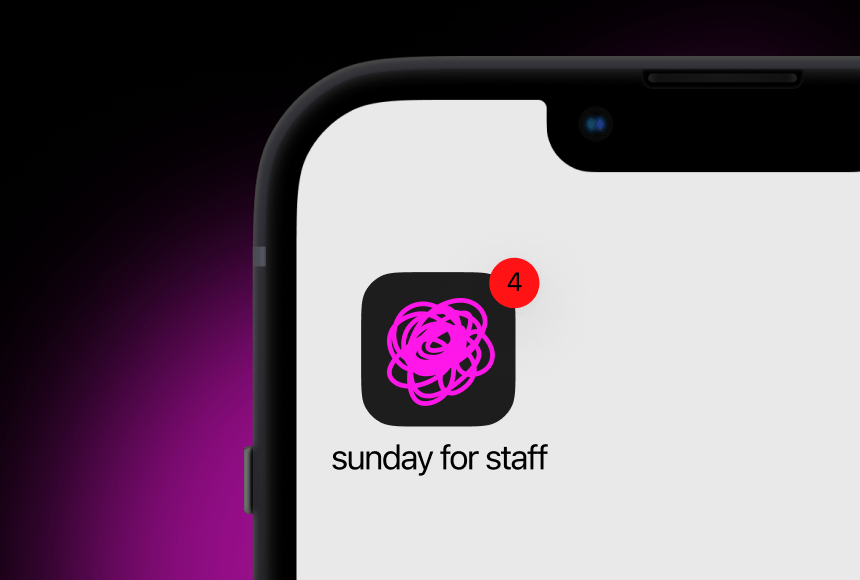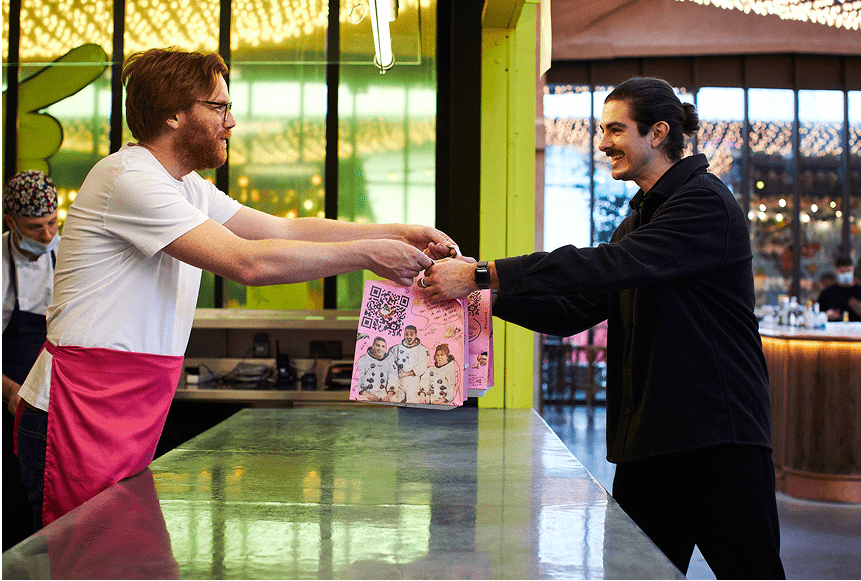
Why Clinging to an Old Card Terminal Could Be Draining Your Profits
An Evolving Restaurant Landscape
The restaurant industry has always been a melting pot of great food, impeccable service, and unforgettable experiences. But as we edge closer to 2025, technology has become an essential ingredient in that recipe for success. Even the most traditional local eatery needs to embrace efficient, modern methods to meet shifting customer expectations. In the UK, where nearly 90% of all non-cash payments are made with cards according to UK Finance, it’s no surprise that payment systems are facing more scrutiny than ever.
If you’re still relying on an outdated card terminal, you might be worried about the obvious issues: slow transactions, connectivity hiccups, and less-than-ideal security features. Yet there’s a deeper consideration beyond these surface complaints. Hidden costs—ranging from lost tips to customer dissatisfaction—drain revenue, affect loyalty, and even tarnish your establishment’s reputation. You might not realise how much you stand to lose in 2025 if you don’t upgrade soon.
Picture your outdated card machine as a kitchen appliance that’s well past its prime: It still works, but it’s far from efficient—and there’s a high chance it’s quietly spoiling your entire operation. Let’s explore the many ways that clinging to this antiquated technology might be holding you, your staff, and your bottom line back.
Defining “Outdated”: It’s More Than Just a Slow Transaction
When we say “outdated,” we’re not just talking about the machine’s physical condition. An outdated card terminal in 2025 is any device lacking modern features that your customers have come to expect. For instance:
- No contactless payment option
- Inability to accept NFC or mobile wallet transactions
- Lack of the latest security standards (like PCI DSS updates)
- Slow, unresponsive software, prone to connectivity dropouts
In the UK alone, contactless payments have increased in popularity with each passing year, especially since the limit was raised to £100. These modern conveniences have quickly become the norm. Failing to meet these expectations makes your restaurant look behind the times—and that seems a bit jarring when your menu, décor, or the craft cocktails at your bar might otherwise suggest you’re on the cutting edge.
But the “outdated” label extends beyond mere functionality. Consider staff training, brand image, and even how easy it is to integrate with other systems (like your table-booking software or inventory management platform). If your payment terminal doesn’t integrate smoothly or requires repeated manual entry, it’s costing your team time and sanity.
Hidden Financial Costs That Could Be Piling Up
Using an outdated card terminal can feel like taking shortcuts in a recipe: it might save time initially, but the eventual result can be bland—or worse, inedible. Below are some hidden pitfalls that are likely taking a bite out of your profits.
1. Higher Transaction Fees
Surprisingly, older terminals might not be compatible with the most up-to-date processing networks. This can result in less favourable interchange rates, meaning you pay more per transaction than you would with a modern terminal that negotiates better terms.
2. Frequent Maintenance and Replacement Costs
Machine malfunctions lead to unexpected repair bills or emergency replacements. Service calls during busy weekends can pile up, and you may even lose revenue if your payments go offline for a few hours.
3. Longer Check-Out Times
Slow transactions translate to fewer table turnovers. During peak hours, a lagging device can mean tables sit occupied for longer, and frustrated guests may simply walk away if they have to wait too long to pay.
4. Inaccurate Tipping and Staff Motivation
Some outdated terminals don’t prompt for tips properly—or at all. Missing out on just a pound or two per table can add up throughout the week. Worse, your staff might feel demoralised if they suspect they are losing money.
When you add these factors together, month after month, you end up with financial leaks that can significantly impact your bottom line. Spotting these hidden costs—and acting to eliminate them—is crucial in a fiercely competitive market.
The Impact on Customer Experience and Your Reputation
Good hospitality isn’t just about how delicious your dishes are. It’s also about ensuring your guests feel comfortable and valued at every stage of their visit, payment included. In the era of 2025:
- Customers expect a speedy, contactless option.
- They want to settle up immediately upon request.
- They value the simplicity of scanning a QR code and tipping with a tap.
If your card terminal drags the process out—or worse, crashes mid-transaction—you’ve turned what could be a delightful experience into an inconvenient one. In a world where diners often share their reviews on platforms like Google, a simple glitch at payment time can lead to negative feedback that puts off future customers.
UK diners have grown particularly fond of frictionless checkouts, and if your system can’t match these elevated standards, you risk being perceived as behind the curve. When you provide an outdated payment experience, you’re essentially telling your customers their time isn’t as valuable as their money.
Legal and Compliance Risks in 2025
In an age where data breaches grab headlines, compliance is a non-negotiable. Older card terminals may not meet the latest Payment Card Industry Data Security Standard (PCI DSS). While you might assume small businesses or independent restaurants fly under the radar, the truth is quite the opposite.
Failing a compliance audit can result in fines or even losing the ability to process card payments altogether. In 2025, regulations in the UK are likely to become stricter—particularly around personal data protection. Guests trust you with sensitive information every time they pay by card. If your restaurant doesn’t meet legal requirements, you risk lawsuits, fines, and a serious hit to your reputation.
It’s not just PCI DSS, either. The UK Information Commissioner’s Office continues to emphasise compliance with data protection laws. If your old card machine stores or transmits data in ways out of step with newer regulations, you could be opening yourself up to enforcement actions that cost far more than a modern terminal upgrade ever would.
From Missed Opportunities to Damaged Loyalty
A restaurant isn’t only about the transactions that happen at the till—it’s about the relationship you build with guests. Updating your card terminal isn’t just a matter of speed or security; it’s also about creating an experience that entices customers to return. Integrations that allow you to track and reward loyal patrons or encourage them to share feedback (for instance, through quick QR code links to Google reviews) can boost your brand visibility.
Restaurants that integrate loyalty programmes with payment data tend to see increases in repeat business. Imagine automating the process where a returning customer’s information pops up, letting you greet them by name or offer a tailored discount. That’s how you transform a typical meal into a personalised experience.
If your phone lines keep ringing with “Do you have a table free?” while you juggle an outdated booking system and a finicky card machine, you’re missing valuable chances to capture guest data. Embracing modern solutions can centralise your entire operation, from reservation management to payment processing, building an ecosystem that puts you in control.
A Real-Life Example: The “Lost Tips Café”
Let’s take a look at a hypothetical scenario we’ll call the “Lost Tips Café.” The manager, Sarah, stuck faithfully to her old card terminal because “it’s always worked.” Over time, Sarah noticed some recurring issues:
- Staff reported the machine was slow to connect, leading to guest impatience.
- Because the tip prompt wasn’t user-friendly, tips dropped by 20% across the restaurant.
- On weekend evenings, lines of guests wanting to pay stacked up, delaying seatings for new arrivals.
- Sarah had to pay extra support fees whenever the terminal malfunctioned—and it wasn’t unusual for it to crash during busy periods.
The final straw came when a competitor across the street installed a sleek new system that allowed diners to scan a simple QR code on their bill, pay immediately from their smartphones, and leave a tip with a single tap. Suddenly, loyal customers were wandering over there instead. A few negative Google reviews about “slow service at the till” sealed the fate of Lost Tips Café.
This scenario might feel extreme, but it happens more often than you’d think—especially in busy, competitive environments. Outdated card machines don’t just cost you money; they can unravel your entire customer experience.
Swapping Out Your Old Card Machine: Key Considerations
Upgrading your payment solution in 2025 isn’t just a question of “Which device do I buy next?” It’s about making sure your new setup addresses all the shortcomings of your old system. Here are some key points to consider:
- Contactless Capability: Whether it’s for cards or mobile wallets, make sure your new terminal supports quick tap-to-pay.
- Integration with Existing Systems: From your reservation software to your stock management tools, seamless integration saves you time and money.
- Customer Engagement Features: Can you automate follow-up emails, loyalty programmes, or prompts for reviews?
- Security and Compliance: Is it PCI DSS compliant? Does it use point-to-point encryption for secure transactions?
- Reporting and Analytics: Will it provide daily reports, staff tips tracking, and real-time data on sales?
- Service and Support: Who do you call if something breaks on a Saturday night?
Asking detailed questions on each of these points helps you dodge unexpected fees and ensures you’re purchasing a system that truly aligns with your restaurant’s needs.
But Wait—Why Stop at a Card Machine?
Sometimes, focusing only on the card terminal is like upgrading your oven but ignoring the rest of the kitchen. Modernising your payment processes can—and should—go beyond a single device. Payment solutions are increasingly tied to the broader customer journey:
- QR Code Payments: Allow guests to settle their tab by scanning a code with their smartphone.
- Digital Menus: Let your customers browse or even order from a digital menu link, shared via QR code or your website.
- Tip Prompt: Encourage tipping in a friendly, visible manner—even when customers pay online.
- Google Reviews: After payment, prompt guests to leave a quick review, building your online presence.
Investing in a fully integrated solution might sound like a big leap, but it’s a move that can future-proof your business. Not only will you stay compliant and competitive, but you’ll also demonstrate to your customers that you value their time and comfort.
Practical Steps to Upgrading in 2025
If you’re considering modernisation, let’s break down a logical process to ensure you cover your bases:
- Identify Your Needs: Assess where your current system falls short—be it slow transactions, limited payment types, or poor integration with loyalty programmes.
- Research Vendors: Look for reputable providers that align with your specific needs in the restaurant sector. Check for references, read reviews, and compare pricing.
- Negotiate Fees and Terms: Explore monthly subscription options, hardware leasing, or purchase plans. Pay attention to interchange fees to avoid nasty surprises.
- Train Your Staff: An upgraded system is only as good as the team operating it. Ensure they feel comfortable converting to new tech, from transaction procedures to advanced functions like split bills.
- Test Before You Buy: Many solutions offer demos or trial periods. Take advantage of these to check if the system truly suits your workflow.
- Promote the Upgrade: Let your customers know. Mention your new, faster payment methods on social media or in-person when they arrive. This drums up excitement and positions you as forward-thinking.
By following these steps, you set the stage for a smoother transition, fewer unexpected costs, and a clear ROI on your payment solution investment.
How Payment Solutions Like sunday Fit In
Some modern solutions go beyond being “just a card terminal.” A service like sunday not only offers fast, seamless payments via QR code, but also enables functionalities like integrated tipping prompts and easy links to Google reviews. Guests can handle everything at their table—on their own phones—freeing your staff to focus on providing an excellent dining experience.
Why does it matter in 2025? Because the diners of tomorrow will be even more accustomed to self-service and mobile convenience. Instead of waiting for a card machine, they’ll expect to be able to whip out their phones and settle up in seconds. This is a massive plus if you aim for higher table turnover, improved tip collection, and a more enjoyable customer journey.
Many of these solutions also update regularly to stay compliant with ever-changing security regulations, protecting both you and your guests. Opting for a solution that’s evolving to match industry standards could reduce the risk of facing unexpected compliance fees later.
Breaking it Down: A Quick Cost-Benefit Table
For a quick snapshot, here’s a simplified comparison of sticking with an outdated card machine versus upgrading to a modern solution:
| Factor | Outdated Card Machine | Modern Payment Solution |
|---|---|---|
| Initial Cost | Low (already purchased) | Medium (new hardware or software) |
| Transaction Speed | Slower, potential downtime | Faster, streamlined checkouts |
| Security & Compliance | Risk of non-compliance | Updated to meet regulations |
| Tips & Upselling | Frequent missed opportunities | Integrated tipping prompts |
| Customer Satisfaction | Potentially frustrated guests | Smoother experience |
| Long-Term ROI | Diminishing returns | High growth potential |
While the new system requires an investment, the long-term benefits far outweigh the initial costs, especially considering the direct impact on customer experience, staff motivation, and financial returns.
Frequently Asked Questions (FAQ)
Below are common concerns restaurant owners often raise when considering an upgrade to a modern payment solution.
How does an updated card terminal help with tips?
Modern devices typically feature a clear, intuitive tipping interface. Guests see it as part of the normal flow, and staff don’t have to awkwardly prompt for gratuities. This can lead to an increase in average tip percentages—a boost to staff morale and retention.
Is it risky to switch solutions during peak seasons?
While peak times can be stressful, many providers offer training and transitional support to minimise disruption. If you plan thoroughly—conducting trials in off-peak periods and training your team—you can avoid major hiccups, even during your busiest nights.
Will my staff struggle with the new technology?
Most modern solutions are designed with simplicity in mind. Providers usually offer comprehensive onboarding. After a short learning curve, staff often find the technology more intuitive than the old systems they’ve replaced.
How secure are QR code payments?
QR code payments use encrypted channels to handle sensitive information. Reputable services also offer PCI DSS compliance and advanced fraud detection. The important thing is to confirm that your chosen provider follows stringent security standards.
Are these solutions expensive?
Costs vary, but they’re generally recouped through increased efficiency, fewer errors, and happier customers. Many providers also offer flexible monthly plans, so you can choose the arrangement that fits your budget.
What if my internet goes down?
Many modern terminals and QR-based solutions offer offline modes or mobile data options to ensure continuity. Always plan for a backup connection, especially if you’re fully reliant on a digital payment system.
When you weigh the potential risks of keeping your outdated card machine against the benefits of a modern solution, the decision often becomes much clearer. Smart, secure, and user-friendly technology in 2025 isn’t a luxury—it’s simply the new standard. By embracing the change, you’ll be delivering an experience that meets your customers’ expectations, energises your staff, and helps your restaurant thrive in a fast-evolving market.
Find out more today
Drop us your details below and we’ll reach out within the next 24
More tips means a better service.
3X more tips mean 3X better guest-experience, and 3X better staff-retention.




